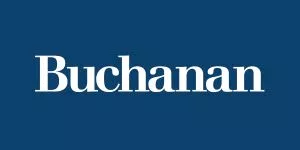- within Antitrust/Competition Law topic(s)
- in United States
- within Antitrust/Competition Law topic(s)
- in United States
- within Accounting and Audit, Finance and Banking and Consumer Protection topic(s)
Athlete compensation has been a hot topic for years, and a spate of recent court decisions has opened the floodgates for antitrust challenges in college sports. With the explosion of revenue flooding athletic departments from lucrative media contracts, antitrust scrutiny of collegiate athletics has only intensified. College athletes have been on an undeniable winning streak over the past decade. In a series of legal challenges, athletes have succeeded both in expanding opportunities to profit from their name, image and likeness (NIL) and in loosening restrictions on their eligibility and ability to transfer. However, a pair of recent decisions in the NCAA's favor has slowed (though not likely stopped) the momentum.
Fourqurean v. NCAA
Seeking to reap the benefits of potential NIL deals and to showcase his talents in order improve his NFL draft prospects, University of Wisconsin defensive back Nyzier Fourqurean sued the NCAA, claiming its "Five-Year Rule" governing player eligibility has anticompetitive effects. Fourqurean's win in the Western District of Wisconsin was short-lived, as the Seventh Circuit reversed the decision to block enforcement of the NCAA eligibility rule, holding that the complaint failed to allege sufficient facts to establish anticompetitive effects in order to make out a claim under the Sherman Act. For institutions, governing bodies and those advising stakeholders in the NIL space, the decision signals that courts are still willing to uphold athlete restrictions, though the margin for error appears to be shrinking.
Fourqurean began his career at Division II Grand Valley State University, where he spent two years before transferring to Wisconsin in 2023. Following two productive years as a member of the Badgers' secondary, Fourqurean sought a preliminary injunction to extend his eligibility. The NCAA's "Five-Year Rule" limits student-athletes to four seasons of play within five calendar years. Fourqurean's suit claimed that this rule constitutes an illegal restraint of trade or commerce under the Sherman Act because it prevents student-athletes like Fourqurean from competing in NCAA Division I football.
The trial court agreed, issuing a preliminary injunction that blocked enforcement of the rule temporarily. However, on appeal, the Seventh Circuit overturned the injunction, noting that Fourqurean relied solely on his own exclusion from participating in college football as the basis for the claimed anticompetitive effects. The court clarified that a colorable Sherman Act claim would require a showing that the Five-Year Rule creates, protects, or enhances the NCAA's dominant position in the relevant market and thus the NCAA's ability to depress student-athlete compensation below the competitive level.
The Fourqurean case is not just about eligibility timelines. Though the decision deals explicitly with player eligibility at the college level, it also demonstrates how courts analyze college sports within the larger context of federal antitrust law, and what this means for NIL rules following the Supreme Court's unanimous 2021 ruling in Alston and the recent House settlement.
Pryor v. NCAA
Just three days after the Seventh Circuit's decision in Fourqurean, the Southern District of Ohio dismissed former Ohio State quarterback Terelle Pryor's proposed class action. The lawsuit, filed against the NCAA and Ohio State, alleged that Pryor was wrongfully deprived of the ability to profit from his NIL during his college career, which spanned from 2008 to 2010. Pryor and four teammates were suspended for accepting improper benefits in the January 2011 "Tattoo-gate" scandal.
Dismissing the case as time-barred, the court found that the Sherman Act's four-year statute of limitations had long since expired. While the Fourqurean case addressed the brief window during which athletes can market their NIL at the college level, the Pryor ruling underscores the limited statutory period during which athletes can challenge NCAA rules. However, without a decision on the merits, it is not hard to anticipate similar legal challenges from athletes who have lost eligibility and, by extension, the opportunity to profit from their NIL.
The Legal Landscape
The Fourqurean and Pryor rulings arrive just as the NCAA is attempting to implement the landmark settlement in the consolidated House antitrust class action litigation. The settlement, which was granted final approval from Judge Claudia Wilken of the Northern District of California in June, is poised to completely transform the economics of college sports, though the NCAA continues to resist what it perceives to be a slippery slope into "pay-for-play."
The NCAA has consistently maintained that paying athletes to perform undermines the principles of amateurism that it exists to uphold. Setting aside the normative appeal of the NCAA's position, it has repeatedly shown to be a losing legal argument. Indeed, courts have consistently recognized the commercial nature of college sports, chipping away at NCAA rules in response to challenges mounted by athletes under the Sherman Act. Since the Ninth Circuit's ruling in the O'Bannon case a decade ago, the tide has been undeniably in favor of college athletes seeking to profit from their right of publicity. Thus, the Fourqurean and Pryor rulings present the NCAA and its member institutions with a temporary reprieve, though arguably these cases also provide a roadmap for future plaintiffs to bring timely and better-supported claims.
Of course, looming prominently in the background is the House settlement, which provides $2.8 billion in back pay for a class of college athletes who competed since 2016. Going forward, the settlement also provides for up to $20.5 million annually in direct revenue-sharing payments from individual schools to athletes, causing some to declare an end to the decades-long debate over the "amateur model" in college sports. Though it resolved pending claims from a class of roughly 390,000 athletes, the House settlement has inevitably spawned new disputes over eligibility, compensation, and competitive balance as schools and athletic conferences begin to craft their own rules in advance of the 2025-26 season.
The House settlement extends beyond the NIL space and further solidifies antitrust law as the preferred vehicle for attempts to reform college athletics — building on the challenges posed in the groundbreaking O'Bannon and Alston cases. In this evolving landscape, questions regarding compliance, enforcement, and fairness are no longer administrative; they are economic. Notwithstanding the recent decision in Fourqurean and Pryor, courts have generally expressed skepticism over NCAA rules and attempted restrictions on athlete freedom, especially when considering wage controls. While the House settlement did not address it, there still remain a number of serious issues posed by this new college athletics landscape, including whether or not college athletes should be considered as "employees" post-House and the Title IX implications of the settlement and the resulting payments. Those operating in sports law generally and NIL specifically must await to see if federal antitrust law will continue to shape the industry.
Legislative Solutions
For years, the NCAA has lobbied Congress to pass a comprehensive NIL statute which would supercede the hodgepodge of various state statutes (which are not consistent and which are not present in every state). While roughly a dozen bills have been proposed, none have made it out of committee. However, momentum for a legislative solution has been building. In January, Senator Ted Cruz, the newly elected chair of the powerful Senate Commerce Committee, announced that college sports reform would be one of the major priorities of the current legislative session. Cruz previously sponsored a 2023 NIL bill that failed to advance out of committee.
Then, in July, Gus Bilirakis, Chair of the Energy and Commerce Committee's Subcommittee on Commerce, Manufacturing, and Technology, introduced the SCORE Act to codify NIL rules for college athletes. The bipartisan bill, co-sponsored by seven Republicans and two Democrats, includes antitrust protections, as well as provisions pre-empting state laws regulating NIL and precluding the treatment of athletes as employees of their respective schools. On July 23, the SCORE Act won committee approval, making it eligible to proceed to the floor for a vote. The next day, President Trump weighed in, issuing an executive order on July 24 with the aim of providing "the stability, fairness, and balance necessary to protect student-athletes, collegiate athletic scholarships and opportunities, and the special American institution of college sports." Senator John Thune and Senator Ben Cardin recently reintroduced a bill that would prevent donations to NIL collectives from being considered charitable contributions for tax purposes.
Executive Action
Decrying the "bidding war culture" overtaking college sports, President Trump's executive order announces that "it is the policy of the executive branch that third-party, pay-for-play payments to collegiate athletes are improper and should not be permitted by universities," though it carves out an exception for brand endorsements and other "fair market value" NIL deals. This is aimed, in large part, to address large payments being made by third party booster collectives associated with universities. The executive order also seeks to expand "opportunities for scholarships and collegiate athletic competition in women's and non-revenue sports." However, the executive order does not establish any enforcement mechanism for either of these directives. And while the executive order further calls on the Attorney General and the Federal Trade Commission to safeguard student rights and address antitrust threats to college athletics, it does not offer any specific guidance for doing so. Instead, "enforcement" of the new "fair market value" standard for NIL deals is being overseen by the newly created College Sports Commission (CSC) (which is NOT a government entity) established in the wake of the House settlement
Nevertheless, by signaling the federal government's intent to intervene directly in the regulation of NIL, the Trump administration may accelerate changes that neither the courts nor Congress have been able to fully address. Indeed, in a statement released shortly after the administration's announcement of the executive order, Republican sponsors of the SCORE Act applauded President Trump for his "commitment to supporting student-athletes and strengthening college athletics in the NIL era," noting that the proposed legislation "will complement the President's executive order." For stakeholders across college sports, the message is clear: federal oversight of athlete compensation is no longer a distant possibility — that day has arrived.
Practical Realities
In the meantime, controversy has already erupted following the NCAA's July 1 implementation of the new NIL rules established by House. The newly established CSC has faced particular criticism, with some claiming that its efforts to prevent schools and collectives from circumventing the $20.5 million revenue-sharing cap are ineffectual, and others claiming that its approach is too draconian. Among this latter group, attorneys representing the players in House have objected to the CSC's guidance on the "valid business purpose" requirement for NIL deals between athletes and third-party collectives, lodging complaints over the CSC's rejection of contracts that do not provide goods or services to the general public for profit. This requirement was a hotly contested issue in House, as the NCAA has consistently maintained that fake NIL deals constitute "pay-for-play" arrangements that are incompatible with the principles of amateurism in college athletics.
Initially, the CSC sought to hold booster-led collectives to a higher standard than other businesses, denying dozens of deals on the grounds that they lacked a "valid business purpose." However, following hard-fought, semi-public negotiations, attorneys for the House plaintiffs ultimately persuaded the CSC to reverse course. The CSC will no longer disqualify deals based solely on a collective's purpose, instead evaluating transactions like any other third-party business. The revised interpretation issued by the CSC on July 22 legitimizes more NIL deals and softens the enforcement cap, creating more legal pathways for school-affiliated entities to pay athletes.
July 2025 has witnessed a flurry of developments in the NIL space, as the NCAA readies itself for its first competitive seasons post-House. Regardless of what happens next in this rapidly evolving legal landscape, Buchanan's Antitrust and NIL Practice Groups offer guidance to help clients develop corporate compliance programs, manage government investigations, and avoid both civil and criminal antitrust liability.
The content of this article is intended to provide a general guide to the subject matter. Specialist advice should be sought about your specific circumstances.




